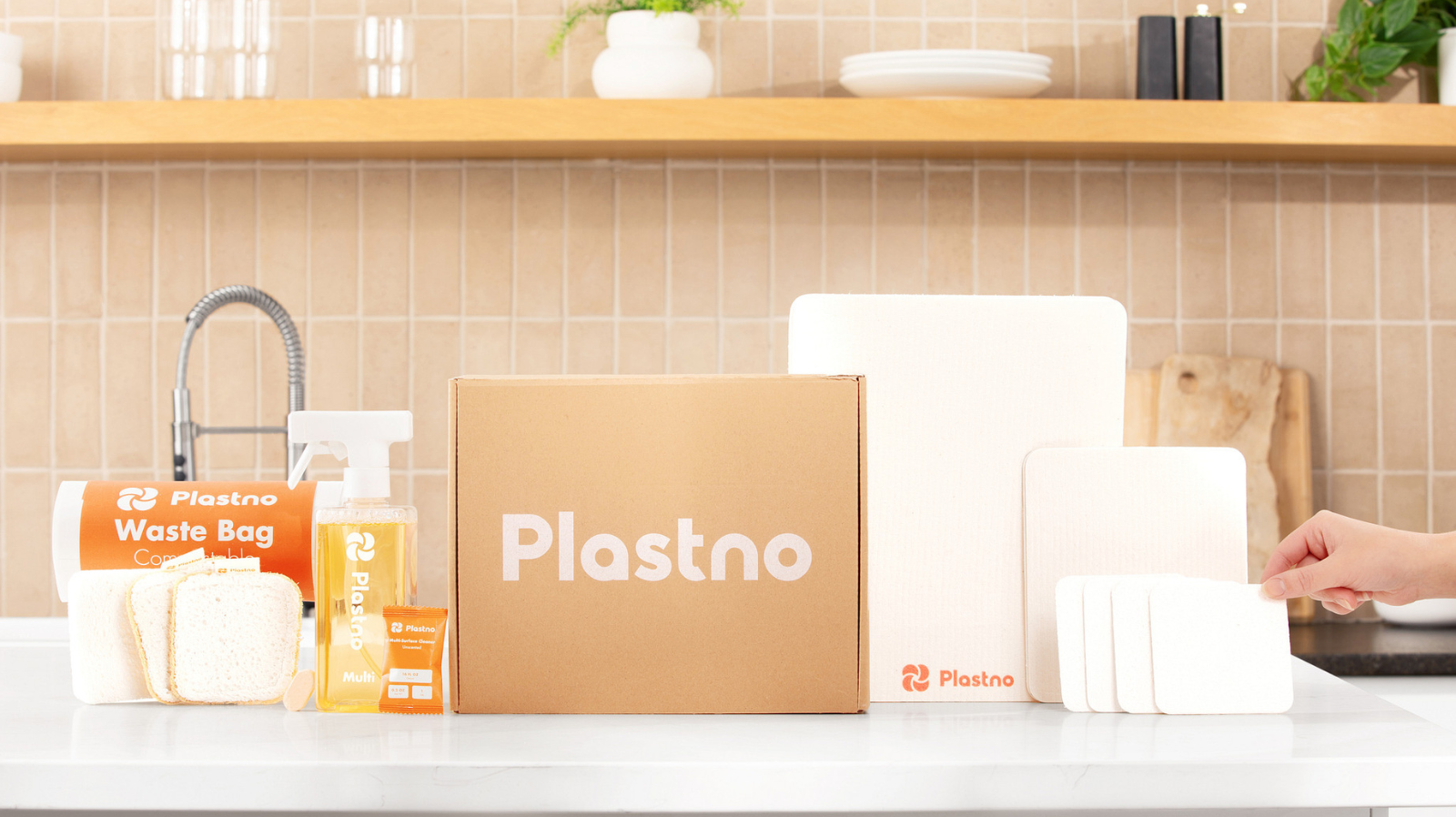Our Top Picks
Green Hive is reader-supported. When you purchase through links on our site, we may earn an affiliate commission. To understand our thorough approach to rating brands and products, explore our comprehensive methodology.
Our Top Picks
Green Hive is reader-supported. When you purchase through links on our site, we may earn an affiliate commission. To understand our thorough approach to rating brands and products, explore our comprehensive methodology.
Key takeaways
- Biodegradable and compostable both refer to the decomposition of materials.
- All compostable materials are, by default, biodegradable.
- For a material to be considered compostable, the composting process must be completed within a certain period.
Introduction
For anyone familiar with sustainability, "biodegradable" and "compostable" are two terms you often encounter. The default thinking is that they are both good for the environment. This is largely correct. These terms have gained significant traction in recent years as more and more individuals and businesses seek eco-friendly alternatives to reduce their environmental footprint.

The promise of biodegradable and compostable products is enticing: the potential to reduce pollution, minimize landfill waste, and promote a healthier planet. However, as we delve deeper into the world of eco-conscious choices, it becomes evident that there are nuances to consider. In this article, we will explore the fascinating realm of biodegradable vs. compostable materials, deciphering the distinctions, benefits, and potential environmental impacts associated with each.
By the end, you'll be better equipped to make informed decisions that align with your sustainability goals and contribute to a greener future.
What Are Biodegradable Materials?
In the most basic sense, for something to biodegrade, it is to break down into its natural elements, typically water, carbon dioxide, and biomass. This natural breakdown process is facilitated by the actions of various microorganisms, such as bacteria and fungi, operating within an environment characterized by suitable temperature, moisture, and oxygen levels.

In essence, biodegradable materials have the inherent ability to return to the environment in a manner that is harmonious with nature's cycles. This characteristic makes them an appealing option for those seeking eco-friendly alternatives to traditional non-biodegradable materials.
What Are Compostable Materials?
Compostable materials are substances or products that have the capacity to undergo complete decomposition into their fundamental components, which typically include water, carbon dioxide, and biomass. Unlike some biodegradable materials that may break down over extended periods, compostable materials are characterized by their ability to break down at a rate consistent with other organic materials and within a relatively short timeframe. Importantly, when compostable materials degrade, they do so without releasing harmful residue or toxins into the environment.
Biodegradable vs Compostable: Two Sides of the Same Coin?
The definitions above may seem confusing to many. After all, "biodegradable" and "compostable" both refer to the breaking down of materials. However, the major difference between the two lies in how long it takes for these products to break down completely. Biodegradable materials can encompass a wide range of decomposition times, from several months to potentially thousands of years, depending on various factors.

In contrast, compostable materials are designed to break down relatively quickly, typically within a matter of weeks, and they undergo this process in a controlled composting environment, leaving behind nutrient-rich compost without harmful residues. It’s important to note that items labeled as commercially compostable will only compost in appropriate facilities and not at home.
Also, biodegradable plastics typically require specific conditions found in industrial composting plants for effective degradation. It's important to note that compostability or biodegradability does not guarantee that a product will break down in just any environment.
Understanding this distinction is crucial for individuals and businesses seeking environmentally responsible choices in their everyday products and packaging. Thus, we can conclude that all compostable products are biodegradable. However, not all biodegradable products are compostable. One can regard biodegradability as a broad term that encompasses several kinds of materials. Compostability is a more specific term that refers to only those biodegradable materials capable of breaking down rapidly and completely into organic components, meeting stringent standards, and leaving no harmful residues behind.
Challenges and Controversies Related to the Terms
We have a plastic crisis on our hands, and the fact that these two terms tilt more towards sustainability has made them particularly appealing in our environmentally conscious era. However, their widespread adoption and sometimes ambiguous usage have also given rise to several challenges and controversies in the realm of eco-friendly materials.
Greenwashing
One significant issue is the phenomenon of greenwashing, where companies may misuse or misrepresent the terms "biodegradable" and "compostable." It is not unusual to see packaging items labeled "biodegradable" and "compostable plastic" in today's market, as these eco-friendly designations have become increasingly popular among consumers and businesses aiming to reduce their environmental impact.

While these labels may suggest a commitment to sustainability, it's crucial to approach them with a discerning eye. As we've explored, not all biodegradable materials are compostable, and the effectiveness of biodegradation can vary significantly depending on the environment.
This can mislead consumers into believing they are making more sustainable choices when, in reality, the products may not meet the rigorous criteria associated with these terms.
Lack of Standardization
Another challenge is the absence of uniform global standards and regulations for labeling products as biodegradable or compostable. This variability in certification and testing procedures can lead to confusion among consumers and hinder their ability to make truly eco-conscious decisions. The ripple effect of this lack of standardization extends beyond individual purchasing choices. It impacts broader environmental and waste management efforts as well.
For instance, inconsistent labeling and certification can complicate the work of waste management facilities. When materials with biodegradable or compostable claims enter the waste stream, sorting and processing become more challenging. Without clear guidelines, these facilities may struggle to identify and properly handle such materials, potentially diverting them to landfills or incineration instead of composting facilities, where their environmental benefits can be maximized.
Additives and Blending
Some manufacturers blend biodegradable or compostable materials with traditional plastics, creating products that are technically "biodegradable" or "compostable" but may not decompose as effectively as pure materials, leading to further confusion. Thus, what they call biodegradable plastics may not biodegrade in time.
A pertinent example that comes to mind is the research conducted by researchers from the International Marine Litter Research. The research found biodegradable, oxo-biodegradable, and conventional plastic formulations were still functional as carrier bags after being in the soil or the marine environment for over three years. One would naturally expect a faster decomposition rate for such materials.
FAQs
Why are compostable plastics bad?
Compostable plastics can be problematic in certain contexts due to limited composting infrastructure, potential contamination of recycling streams, mislabeling, and slow decomposition in natural environments. Their production may also compete with food resources, and there is ongoing debate about their long-term environmental impact.

To maximize their benefits, compostable plastics require appropriate disposal facilities and consumer education, as well as efforts to establish clear labeling standards and address the challenges associated with their production and use.
Is biodegradable better than compostable?
In general, a compostable material is better for the environment than a biodegradable material. This is because compostable materials can be used to create a valuable resource, compost, which can be used to improve soil health and reduce the need for chemical fertilizers. Biodegradable materials, on the other hand, may not break down completely or may take a long time to do so. Additionally, some biodegradable materials may contain harmful chemicals that can pollute the environment during the biodegradation process.
What is the difference between biodegradable and compostable plastics?
The key difference between biodegradable and compostable plastics is in their decomposition processes. Biodegradable plastics break down into natural elements over an undefined period when exposed to environmental conditions, while compostable plastics are designed to break down quickly and completely in controlled composting environments, producing nutrient-rich compost without harmful residues. Compostable plastics offer a more environmentally friendly solution, with a rapid and predictable decomposition process, whereas biodegradable plastics can have variable decomposition rates and may leave behind residues or break down into smaller plastic fragments, which can still have environmental consequences. The choice between the two depends on factors like disposal facilities, intended use, and environmental goals.
Are all compostable materials biodegradable?
Yes, all compostable materials are biodegradable. Compostable materials are a subset of biodegradable materials. While all compostable materials can naturally break down into their constituent elements, such as water, carbon dioxide, and biomass, not all biodegradable materials meet the specific criteria required for compostability. This means biodegradable plastic bags aren’t necessarily compostable.
Why is biodegradable not compostable?
Biodegradable materials are not necessarily compostable because biodegradation does not guarantee that a material will break down rapidly and completely into nutrient-rich compost, as compostable materials do.

While all compostable materials are biodegradable, not all biodegradable materials meet the specific criteria for compostability, such as rapid and complete decomposition in controlled composting environments without leaving harmful residues.
Why don't we use biodegradable plastic?
Biodegradable plastics face challenges such as variable decomposition times, potential residue, and a lack of standardized regulations, making them less reliable for environmentally responsible waste management. They can also contribute to contamination in recycling streams and landfills when improperly disposed of. Compostable plastics, which break down rapidly in controlled environments, are often favored over biodegradable plastics for more predictable and eco-friendly waste disposal.
Conclusions
The subtle but significant difference between compostable and biodegradable materials lies in the speed and conditions of their breakdown. Compostable materials are designed to offer rapid, controlled decomposition into nutrient-rich compost, while biodegradable materials may vary in their decomposition rates and may leave residues. It's crucial for consumers to understand this difference to make informed choices. Proper disposal, support for composting infrastructure, and clear labeling standards are key steps toward a more sustainable future.
Facts or Myth „Biodegradability“ - AllThings.Bio. (2018, November 8). AllThings.Bio. https://www.allthings.bio/fact-or-myth/facts-or-myth-biodegradability/#:~
Nations sign up to end global scourge of plastic pollution. (2022, March 4). UN News. https://news.un.org/en/story/2022/03/1113142
Williams, A. (2019, April 29). Biodegradable bags can hold a full load of shopping three years after being discarded in the environment. University of Plymouth. https://www.plymouth.ac.uk/news/biodegradable-bags-can-hold-a-full-load-of-shopping-three-years-after-being-discarded-in-the-environment

.png)


.webp)


.png)
.png)



.svg)
